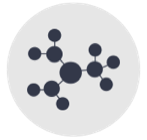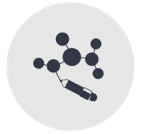Optimising and accelerating
product
development


Our Story
How and why we set up Salupont Consulting
The big problem
Developing a pharmaceutical medicine is hugely expensive and takes a huge amount of time but it doesn’t need to be 'as huge' as it frequently takes. The big problem is that developing a medicine is a highly technical process and it's easy to get bamboozled by all the technical detail and all the regulatory requirements. This exact problem was a particular concern for Dr Daryl Rees while he was Chief Executive of a public, LSE listed, pharmaceutical development company. He realised that the company lacked a unifying system that provided a clear snapshot of product development progress while also providing access to the granular detail and clarity on compliance with the regulations. The technical and seemingly complex nature of pharmaceutical development meant that a considerable number of tasks, costing precious time and money, were being undertaken throughout the industry, without a clear understanding of their absolute requirement or how they linked into other aspects of the development programme or even if they fulfilled the regulatory requirements.
The analysis
Frustrated by the inability to fully justify the requirement for some tasks or to understand whether these tasks truly fulfilled the regulations, Dr Rees began to analyse how all development plans were traditionally put together in the pharmaceutical industry. A striking feature was that all development plans, right across the industry, had only a vague link to the regulatory requirements and even then, the association appeared random. Believing that this was the major flaw leading to many of the issues of inefficiency and lack of clarity in the industry, he began to map out the development of a product, starting with the regulatory structure for pharmaceutical medicines as the backbone. He then created a detailed decision analysis for all of the tasks that were either recommended or required by the regulations and separated the analysis into the 3 distinct disciplines, as defined by the regulatory authorities; Quality, Nonclinical and Clinical. Next, he aligned the disciplines with the end business goal of putting the medicine successfully on the market in the most efficient and effective manner. This process was repeated separately for each phase of the medicines development process from product concept to product launch.
Disciplines in pharmaceutical development
Quality
Nonclinical
Clinical
The need to know
A key requirement of the analysis was that each task had to produce a measurable end point, with data or information that was an essential 'building block' to the main objective of gaining marketing approval of the medicine. This resulted in a clear, focussed ‘end goal orientated’ structure. If the task appeared to end in an apparent ‘blind alley’, with little perceivable utility, it was removed as being a ‘nice to know’ but not a ‘need to know’.
In the zone
He then segmented each of the disciplines into different 'zones'. Each zone spanned several tasks that were required to lead to a significant step change in the development of the medicine. Importantly, the end of each zone represented a ‘go’ or ‘no go’ decision point, defined as a ‘milestone’. If the end of the zone resulted in a successful outcome, which met all predefined goals, then the work could ‘go’ to the next zone. If, however, the end of the zone resulted in a failure to meet the predefined goals then the work was a ‘no go’ to the next zone. Once a set of work was classed as a ‘no go’, a series of brief iterative cycles of assessment and action were undertaken through a pre-defined decision analysis to either progress to ‘go’ if successful or ‘no go’ if not. At this point, a repeated ‘no go’ would trigger the halting of the work zone in the discipline and potentially that of the whole development programme.
From marginal gains to major gains
Once each discipline had been individually fully analysed using this process he began to connect all three disciplines together. Once fully integrated as one big ‘development plan’, he further went through a second decision analysis to double check whether the new holistic model still aligned with the stated business goals and the regulatory requirements. He further optimised the timing of the tasks to link across all 3 disciplines within each phase of development, a common approach used when constructing project plans (known as Gantt charts). What was striking about undertaking this structured analysis methodology, was that the timeframe of whole zones could easily be moved to optimise time to market. This also allowed outgoing costs to be much more finely titrated. Moreover, he also found that relatively small increases in spend and/or task optimisation early on in some zones could accelerate the whole development programme leading to faster times to market, which in some cases represented gains of several months to years with much lower development costs overall. Although only marginal gains were seemingly being achieved for each task, the structured analysis methodology was multiplying the gains so that major gains were being achieved for the whole development programme.
From confusion and complexity to clarity and compliance .....and back to the drawing board
When Dr Rees finished the whole analysis, he realised, that although this methodology would significantly transform and vastly improve the way medicines were being developed in the company, he was going to have a problem in communicating this approach to the development team. The whole development programme, from product concept to product launch, laid out in its entirety in standard 12 font, spanned 3 large office walls, which was impossible to read at any distance other than right up close, which somewhat defeated the holistic to granular objective. The number of tasks alone amounted to over 5 thousand lines on a single Gantt chart project plan and that was for just one product. This was far more than the Gantt charts normally used in the pharmaceutical industry. Pleasing as it was to see all the detail, all in one place, he realised that for it to be fully understood, appreciated and used effectively and efficiently, he needed to develop a system for the methodology that could switch effortlessly between the big picture and the detail. Crucial for the success of the methodology would be a system that had the ability to provide the holistic aspect of the development while instantaneously being able to dive into the granular detail of each 'phase', each 'discipline', every 'milestone driven zone' and every individual 'end goal orientated task', all with the associated costs and timelines and all in a simple visual format.
Visual Process Roadmap™ (VPR™) and End Goal Orientated Gantt™ (EGOG™) system as an enabling platform
The seeds of the Visual Process Roadmap™ (VPR™) and End Goal Orientated Gantt™ (EGOG™) system were sown and Dr Rees along with the Head of R&D, Dr Antonia Orsi, took a career change and set up Salupont Consulting to develop a refined version of the VPR™ and EGOG™ system as an enabling platform to provide expertise and advice to the pharmaceutical and food industries. Once up and running, it soon became clear that the methodology and the refined system were highly effective in optimising and accelerating the development of medicines. Moreover, the VPR™ and EGOG™ system proved to be extremely flexible so that other disciplines were soon incorporated, such as patenting, licensing and Phase IV clinical/post marketing activities.
The solution to the big problem.....thinking differently
As highlighted, one of the big problems facing developers of medicines is that the process is highly technical and it is easy to get bamboozled by all the technical detail and all the regulatory requirements. The VPR™ and EGOG™ system effectively eliminates this technical and regulatory ‘fog’. Having the pharmaceutical regulations as a backbone structure, enables a clear, big picture view with simultaneous access to the granular detail and clarity on compliance with the regulations. The ability of Salupont Consulting to look at all aspects of the development process in this incredible detail, from all angles, enables the team to think differently. Innovating the development process by thinking differently in such a highly regulated industry is what sets the team apart from other consultancies, big or small. By using this methodology, Salupont Consulting is enabled to provide an alternative roadmap that optimises and accelerates development from product concept through to launch and post marketing.
VPR™, EGOG™ and Artificial Intelligence (AI)
Super computers having the ability to 'learn' or 'problem solve', known as artificial intelligence (AI), are already helping to enhance pharmaceutical development. AI is being used to quickly 'read' vast amounts of scientific data and use 'patterns' in the data to improve and accelerate the design of candidate medicines and to scan tissue samples for genetic mutation data in clinical trials with the ultimate goal being to optimise patient treatment. With the VPR™ and EGOG™ system using, as a backbone, the regulatory pharmaceutical electronic specification structure, it is ideally suited for future integration with AI advances, such as in the design of more effective clinical trials and the ability to more quickly analyse the data from them. By actively communicating with the regulatory authorities and medicine developers, Salupont Consulting continues to innovate in this highly dynamic environment.
Vital metrics
By using this focussed ‘end goal orientated’ methodology at the task level, Dr Rees now had full justification for undertaking each task, for each ‘milestone driven zone’, for each discipline and for each phase of development right up to product launch. It was also srikingly clear that having the pharmaceutical regulations as the backbone structure provided absolute clarity on compliance with the regulations; a critical aspect that had been previously lacking. The structure also provided further flexiblity to incorporate emerging regulatory models to improve efficiency and safety in clinical trials such as 'intergrated protocol' designs in early phase and ‘adaptive’ designs in later phase clinical trials. Furthermore, there was also a clear analysis of the cost needed to achieve each ‘milestone’ and exactly how long it would take to get to each ‘milestone’ as well as the combined ‘milestones’ to product launch. These are 'vital metrics', not only for small biotech companies continuously needing to justify further funding from investors but also for project teams within larger organisations competing with other internal projects for a fixed pot of money.
Phases of pharmaceutical development
Hit to lead optimisation
Candidate development
Phase I
Phase II
Phase III
Product launch









